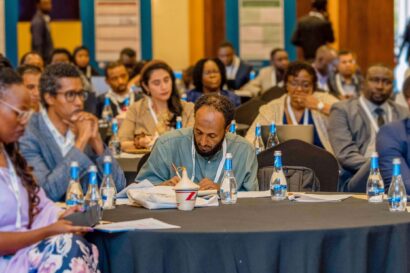Ghana’s Electronic Transfer Levy will come into effect on 1 May 2022 according to the Ghana Revenue Authority. But can it be implemented legally on the proposed date and, beyond that, how is it going to work? In the last few days, the GRA issued some Guidelines aimed at clarifying the scope and the implementation issues, but many questions remain unanswered.
Can it go ahead on 1 May or not?
The constitutional status of the Act is being challenged in the Supreme Court. The Opposition-led challenge is calling for an injunction to stop it. This is quite fundamental. The point at issue is whether the Parliament lacked the required quorum to vote on each clause of the Electronic Transfer Bill, 2021, during the second reading when the Speaker of Parliament put the question. The hearing has been scheduled for the 4th of May and the Levy seems to be in limbo until the case is settled one way or the other. But the GRA still says it will implement it on the first of May.
What is the Levy about?
The government says that the Levy is being introduced to “enhance revenue mobilization by broadening the tax base and to provide for related matters”. Some of the revenues will be hypothecated to support particular spending needs such as support for entrepreneurship, infrastructure and youth employment. The design detail and ministerial statements suggest that the informal economy is the principal target of the Levy.
The Act is commendably brief, but it raises a raft of questions about implementation that you’d hope to see dealt with (quickly) through formal Guidelines or Practice Notes issued by the GRA. In principle, it imposes a tax (called a Levy) of 1.5% on the value of funds transferred electronically. But some transfers fall outside the scope and it’s likely that these will cause confusion and frustration. Announcements have been contradictory. For example, the Minister originally said that international remittances were caught by the Levy. The GRA now says that they’re out.
What will be within the scope of the Levy?
New taxes always raise a lot of questions about how they will work in practice and what exactly is within scope. This Levy is no exception. There has been a worrying silence about the detail since the end of March that might lead you to conclude that either there has been private discussion going on between service providers, intermediaries, and the government about how to operationalise the Act (to the exclusion of everybody else); or that actually no one knows how to deliver the policy intent; or both.
One thing is clear, that the Levy is meant to be charged, collected, and remitted by the service providers (the Charging Entities) responsible for the electronic payment system in Ghana – the banks, the mobile money providers and the other businesses that effect the payments. But there is an important question left hanging in the air: How will they know, on a case-by-case basis, whether to charge the Levy or not?
Take this example: In the terms of the Act, the Levy doesn’t apply to specified merchant payments. So, the Charging Entities don’t need to charge the Levy on them. But when you look behind those words, you see that they are defined as payments made to businesses that are registered with the GRA for VAT or income tax. How will those registrations be checked? This hasn’t been covered in the newly issued Guidelines.
Will the banks and mobile money operators be forced to apply the Levy unless they know for sure that the recipient is registered for tax and is receiving the payment in a business capacity? The little-publicised answer from the GRA appears to be that they have built “a common platform that will serve as an adjudicator”. This lacks some detail but it sounds like a system that will try to match mobile money and bank accounts with the GRA’s list of persons registered for VAT and income tax. How smart will this system be? Will it be riddled with mismatches or could it be glitch-free? Will it treat differently those people who have registered but never filed (properly) and those who are fully compliant? We should all know after the first of May.
Why are banks treated differently from mobile money operators?
The Levy applies to electronic transfers. But what does that mean for transfers within the banking system? The only transfers from bank accounts to which the Levy seems to apply are:
- Payments from a bank account to a mobile money account owned by someone other than the sender; and
- Payments by an individual “on an instant pay digital platform or application” – terms which are not defined in the Act and which will leave many people confused. They aren’t clarified in the Guidelines.
So, payments by companies from their bank accounts are not covered, no matter who the recipient might be. This leaves, for example, corporate payrolls that are run through banks outside the reach of the Levy. But the same payments, made through mobile money, are clearly subject to the Levy.
No level playing field here. The GRA has confirmed that SWIFT payments are not caught by the Levy. Investment accounts are also outside the scope. The whole treatment of bank account payments urgently needs clarification. Should there be better balance between banks and mobile money? Did Parliament consider the question?
How will the daily threshold work?
As if things weren’t difficult enough, there is also uncertainty about how the exclusion for small transfers will work. The Act says that the Levy does not apply to “a cumulative transfer of one hundred Ghana Cedis a day by the same person”. What does that actually mean? Obviously, an individual can send 100 Cedis by mobile money each day and the payment will not be subject to the Levy (you would think). But there the apparent certainty ends.
Suppose someone sends 150 Cedis. Is just 50 Cedis taxable or is the full 150 taxable? The GRA Guidelines say just 50. So that should be ok. But the Act isn’t quite so clear. If someone sends nothing on Day 1 but 200 on Day 2, are they treated differently from someone who has sent 100 each day? And if so, why? Will someone who sends 3,000 Cedis on 30 June pay 45 Cedis of Levy while someone who transferred 100 Cedis each day in June be free of the Levy? Let’s hope the GRA has the answer. Did Parliament understand the legislation when they approved it? What did they understand it to mean?
Another source of uncertainty stems from the fact that many Ghanaians have more than one mobile money account. It’s very expensive to make cross-network payments, so it’s common for people to use multiple accounts with different providers to match networks with different payees. What happens if someone transfers 100 Cedis on one network and another 100 Cedis on a different network, both on the same day? How will the second service provider know about the first transfer?
There’s nothing specific about monitoring in the Act but the (perhaps-surprising) answer seems to be that government will monitor every payment made by every individual on all their accounts, every day. So, when the Guidelines say: “Everyone has a daily tax-free threshold (Limit) GHS 100 – that is every person will be able to send up to GHS 100 a day without the payment of the Levy” the government seems set to make sure the limitation sticks: “This accrues to a person (individual or entity) who has updated his/her records with the Charging Entities using Ghana Card PIN or Taxpayer Identification Number (TIN)”.
There will apparently be another piece of GRA “middleware” to store and track all the electronic transfers reported by everyone in Ghana every day, to police the 100 Cedis Levy-free limit. It seems likely that a lot of people will find this level of reporting and monitoring quite intrusive and decide that cash is still king after all. Can this really be implemented through Administrative Guidelines, under Section 9 of the Act rather than being shown transparently on the face of the legislation? And can it really be implemented satisfactorily in practice, or will there be a multiplicity of errors?
Further clarification required
These are just a few of the many questions that remain to be answered. With luck, someone knows what the policy intent is and will add it into Guidelines. Ideally, we’ll see some clarification in the next few days. But it would be much better if it was all clear in the law itself. It’s great to have simple, straightforward language and a very short Act – but only if it is clear how the law works. Otherwise, people will be frustrated, and the courts will be clogged up with dispute after dispute. Even if the Supreme Court decides that the Act meets the constitutional requirements, it seems there is a long way to go before any of us really know what it means and how it’s going to work.
Stay tuned on the issue of digital financial services and taxation with the DIGITAX research programme!



